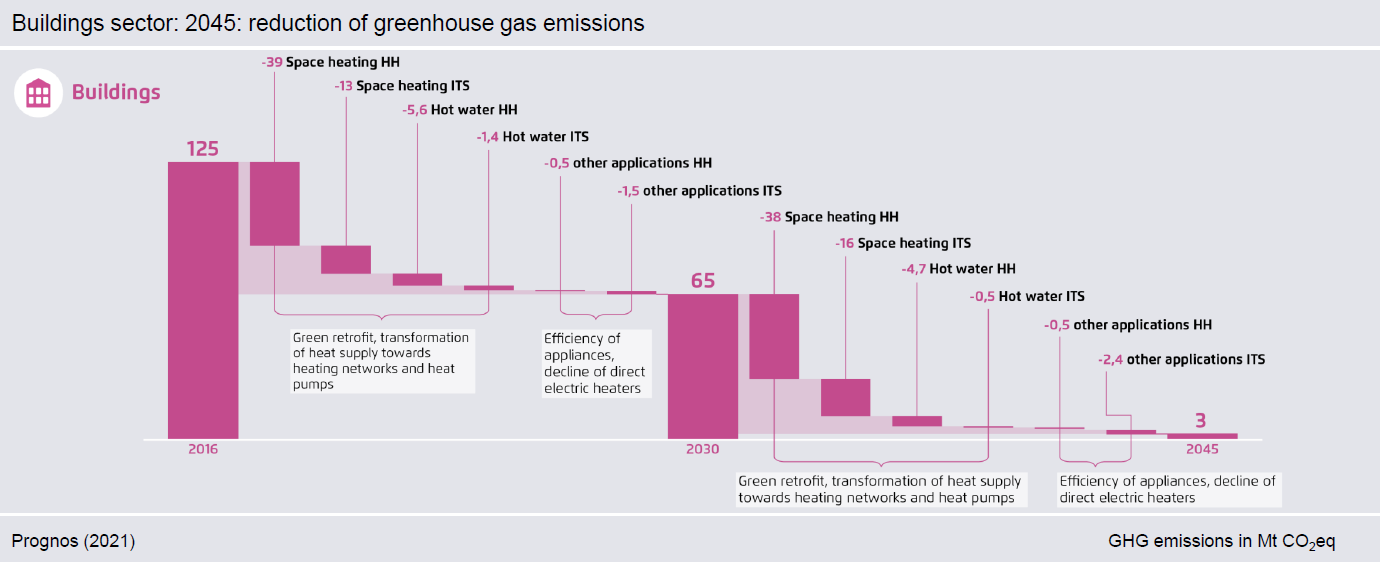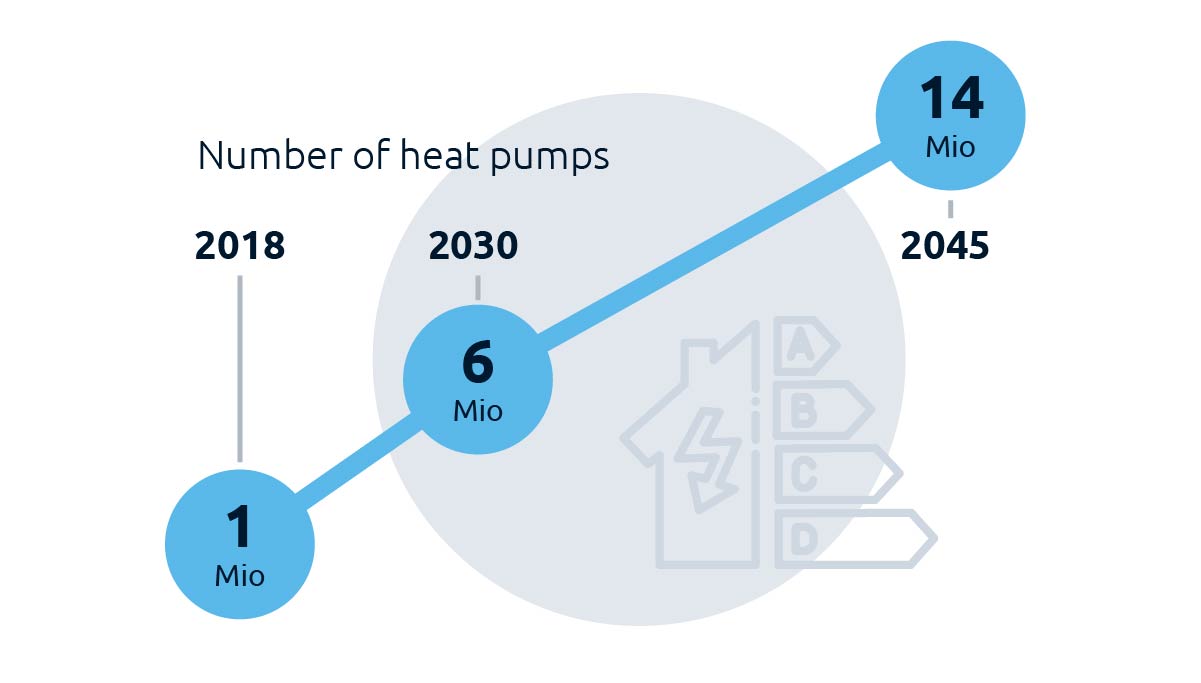Fossil fuels still dominate heavily
Since 1990, greenhouse gas emissions in the building sector have already been reduced by 44 percent. The main drivers for the reduction were the substitution of coal and, from 2000 on, of heating oil. More efficient heating systems (condensing boiler technology), increased building efficiency through refurbishment and the emergence of renewable energies for heat generation were further important factors in reducing emissions. Nevertheless, heating and cooling of buildings still accounts for almost 28 percent of total final energy consumption today; the share of renewable energies in the building sector is only 11 percent.
Heat pumps and heating networks are the focus
Central measures for achieving climate neutrality in the building sector are a shift in the heat supply and improving the efficiency of building envelopes and heating and cooling systems. The rate and depth of energy-related refurbishment needs to be accelerated. Electric heat pumps and heating networks based on renewable energies form the backbone of a climate-neutral heat supply. In 2045, 90 percent of the building space will have been renovated or efficient new buildings will have been built. The share of living space heated by heating networks will rise to 25 percent. In the remaining buildings, 14 million heat pumps will be used.
Long investment cycles require quick action
A major challenge in reducing greenhouse gas emissions is the long service life of buildings and their components. As a result, only a small proportion of the building and plant stock is modernized each year. The associated inertia impedes the quick reduction of GHG emissions. Accordingly, in view of the goal of climate neutrality in 2045, it is particularly important to implement the necessary efficiency and decarbonization measures within the upcoming replacement cycles.

